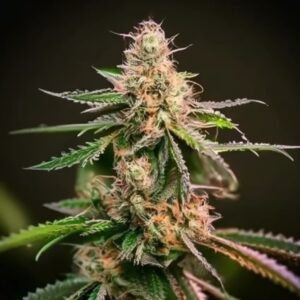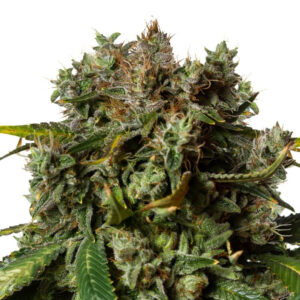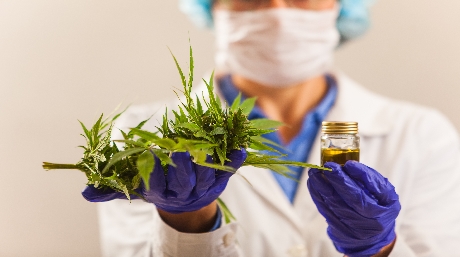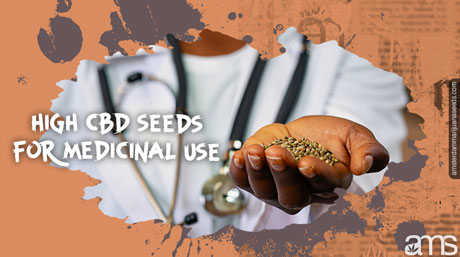A large number of chemical compounds are at work in the human body. In the cannabis plant, you also find chemical compounds, the so-called Cannabinoids.
These different Cannabinoids all have different effects on the chemical compositions in the body. They respond to each other and also work together. A lot of scientific research is being done into these complex compositions and the way, in which they work precisely.
You can distinguish two main groups within the cannabinoid category. These are the Endocannabinoids and Phytocannabinoids.
Endocannabinoids are produced in the body. They are synthesized by enzymes through a process when they are needed. Their functions are addressed at those moments.
And then there are the Phytocannabinoids. These Phytocannabinoids are found in plants. They are compounds that are found in the Cannabis Sativa, for example.
If you use cannabis by smoking it. Or by eating it. Then the phytocannabinoids from the cannabis are absorbed into the body through the respiratory system or the digestive system. If the Phytocannabinoids are absorbed by the body, they work in a similar way to Endocannabinoids.
A lot of research is also being done in the field of Endocannabinoids. In particular, they investigate how they work and what effects they bring about. At the main level, you can distinguish two groups, namely Anandamide (AEA) and 2-arachidonoyl glycerol (2-AG). But in addition to these two, there are many other Endocannabinoids.
Many more variations of the Phytocannabinoids are known. And more are being discovered. In addition, about 100 cannabinoids occur in the cannabis plant. The best known is Δ9-tetrahydrocannabinol (THC) and cannabidiol (CBD). THC causes a high feeling when you use cannabis. CBD in particular has become popular in recent years because many people would benefit from it medically.
Now that we know this, the question arises: why do Cannabinoids have antioxidant effects?
Cannabinoids have an antioxidant effect. And we know that antioxidants have a positive effect on health. You often hear that certain foods or supplements contain antioxidants. But what are antioxidants actually?
To know what antioxidants do and what they are exactly, we first have to take a step back. Antioxidants have to do with the immune system and the inflammatory process in the human body.
When white blood cells are sent to a certain infected area in the body, they deal with unwanted intruders in different ways.
There are certain white blood cells, that are designed to eat bacteria and viruses. That way they are deleted. Compare it to the way your stomach consumes a meal.
But white blood cells can also release free radicals, or reactive oxygen species (ROS). This allows them to help with damaged tissue or to prevent intruders.
Antioxidants respond to ROS and that makes cannabinoids very important. In addition to reducing the effects of ROS, which can be dangerous, they act as a powerful neuroprotectant. This reduces the risk of nerve cells being damaged.
There is something very interesting about this. Cannabinoids apparently, work to do this process completely independently of the CB1 or CB2 receptors. And that explains why cannabinoids have different mechanisms of action.
The fact remains that the cannabis plant still has many secrets. Every day more is discovered about the effect of certain substances from the plant on the human body. What is certain is that the marijuana plant has many antioxidants in it that have a positive effect on the body and that cannabinoids are responsible for this. And the good news is that cannabis contains a lot of cannabinoids.
Disclaimer: The content provided in AMS blog articles, including those related to medical seeds, is strictly for informational and entertainment purposes only. It is not intended to be taken as medical advice. For any medical concerns or questions, we strongly recommend consulting with a qualified healthcare professional. Your health and well-being are important, and a healthcare provider can offer personalized advice and guidance based on your specific needs.
Endocannabinoids are naturally produced in the human body and are synthesized by enzymes as needed to perform specific functions. Phytocannabinoids, found in plants like Cannabis Sativa, mimic the action of endocannabinoids when consumed through smoking or eating.
Cannabinoids act as antioxidants by neutralizing reactive oxygen species (ROS) produced by white blood cells during the immune response. This antioxidant activity helps reduce potential damage from ROS and serves as a neuroprotectant, protecting nerve cells from harm.
The main cannabinoids in cannabis are Δ9-tetrahydrocannabinol (THC) and cannabidiol (CBD). THC is known for its psychoactive effects, causing a “high” feeling. CBD, on the other hand, is popular for its potential medical benefits without inducing a high, including stress relief, pain reduction, and neuroprotection.













Related Posts

CBD, or Cannabidiol, is known as the cannabinoid that does not make you high or the cannabinoid without psychoactive effects. But what is the influence of CBD on the human body? What effects does CBD have on the brain? Is CBD not at all psychoactive? This article answers all your questions about CBD.

After all, it’s cannabinoids that they can thank for providing them with the relief of pain, anxiety, inflammation, and nausea just to name a few.

CBD, a non-intoxicating component of cannabis, is noted for its therapeutic properties, offering relief from anxiety and other conditions without the side effects of THC. High-CBD seeds, legal in areas where medical cannabis is permitted, are a popular choice for those seeking natural remedies. These seeds are designed to maximize the therapeutic potential of CBD, making it easy to grow CBD-rich plants for medicinal use.